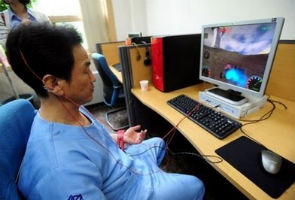- Home
- Others
- Others News
- Software turns grayscale images into realistic colours
Software turns grayscale images into realistic colours

Existing methods require the user's input, either by using a scribbling tool to colour the image manually or by using a colour transfer. Both options can result in poor colourisation quality limited by the user's degree of skill or the range of reference images available.
"We have developed a method that takes advantage of the plentiful supply of internet data to colourise gray photos," said Alex Yong-Sang Chia of the Singapore-based A*STAR's Institute for Infocomm Research, who along with colleagues developed the computer program.
The software searches hundreds of thousands of online colour images, cross-referencing their key features and objects in the foreground with those of grayscale pictures, according to an A*STAR statement.
"The user segments the image into separate major foreground objects and adds semantic labels naming these objects in the gray photo. Our program then scans the internet using these inputs for suitable object colour matches," said Chia.
Given the vast amount of visual data available online, not all of the chosen images are useful. Once the initial colour images have been found, the program then filters them to find the most realistic and suitable matches for the grayscale object inputs.
"Our coloured images were classed as 'real' up to 65 percent of the time," says Chia. "Overall the colourisation results are visually pleasing and perceptually meaningful to users."
For the latest tech news and reviews, follow Gadgets 360 on X, Facebook, WhatsApp, Threads and Google News. For the latest videos on gadgets and tech, subscribe to our YouTube channel. If you want to know everything about top influencers, follow our in-house Who'sThat360 on Instagram and YouTube.
- Samsung Galaxy Unpacked 2025
- ChatGPT
- Redmi Note 14 Pro+
- iPhone 16
- Apple Vision Pro
- Oneplus 12
- OnePlus Nord CE 3 Lite 5G
- iPhone 13
- Xiaomi 14 Pro
- Oppo Find N3
- Tecno Spark Go (2023)
- Realme V30
- Best Phones Under 25000
- Samsung Galaxy S24 Series
- Cryptocurrency
- iQoo 12
- Samsung Galaxy S24 Ultra
- Giottus
- Samsung Galaxy Z Flip 5
- Apple 'Scary Fast'
- Housefull 5
- GoPro Hero 12 Black Review
- Invincible Season 2
- JioGlass
- HD Ready TV
- Laptop Under 50000
- Smartwatch Under 10000
- Latest Mobile Phones
- Compare Phones
- Realme C75 5G
- Lava Yuva Star 2
- Vivo Y19 5G
- iQOO Z10 Turbo Pro
- iQOO Z10 Turbo
- CMF by Nothing Phone 2 Pro
- Motorola Edge 60
- Motorola Edge 60 Pro
- Microsoft Surface Pro 12-inch
- Microsoft Surface Laptop 13-inch
- Honor Pad GT
- Vivo Pad SE
- Moto Watch Fit
- Honor Band 10
- Xiaomi X Pro QLED 2025 (43-Inch)
- Xiaomi X Pro QLED 2025 (55-Inch)
- Asus ROG Ally
- Nintendo Switch Lite
- Toshiba 1.8 Ton 5 Star Inverter Split AC (RAS-24TKCV5G-INZ / RAS-24TACV5G-INZ)
- Toshiba 1.5 Ton 5 Star Inverter Split AC (RAS-18PKCV2G-IN / RAS-18PACV2G-IN)











